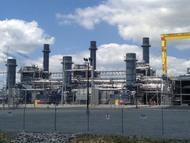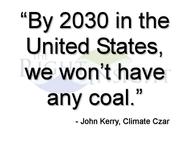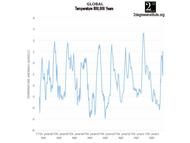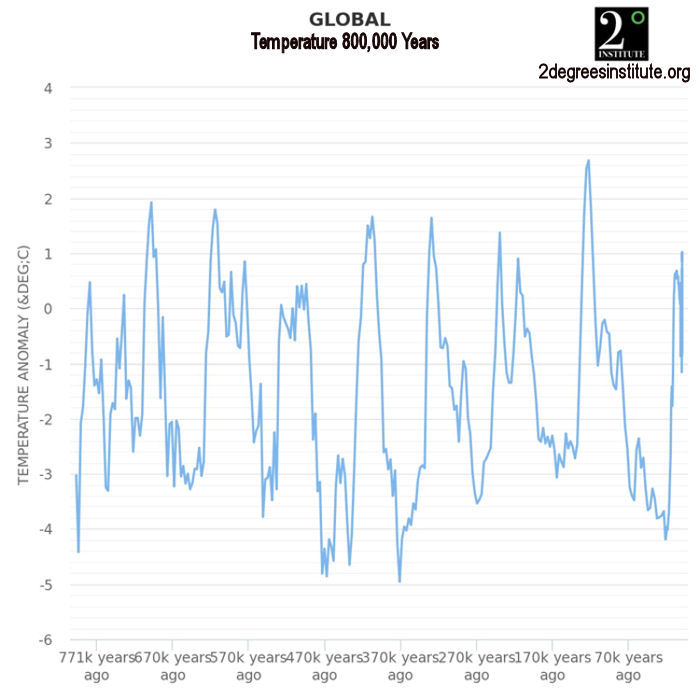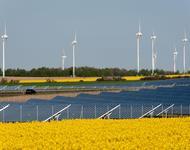This commentary provides a simplified overview of the process of replacing a single dispatchable powerplant with either wind or solar generation plus storage.
The powerplant to be replaced is a 1,000 MW plant, either coal or nuclear fueled. This powerplant would be capable of generating 24,000 MW Hours (MWH) of power per day as a baseload powerplant. Replacing its nameplate generating capacity with 2.5 MW onshore wind turbines would require installation of 400 turbines. However, even assuming very favorable siting, the wind turbines would be expected to generate at approximately 40% of their nameplate rating throughout the day, so replacing the generation capability of the 1,000 MW dispatchable powerplant would require 1,000 wind turbines. However, the instantaneous output of those wind turbines could vary between 2,500 MW and 0 MW throughout the day. Therefore, dispatchable storage would be required to stabilize the output of the storage supported wind farm at 1,000 MW for baseload service. Storage capacity of 10,000 – 15,000 MWH would be required to stabilize facility output and render it dispatchable, depending on characteristic wind conditions.
Typical electric utility load factors are approximately 40%. Therefore, if the powerplant being replaced were in load following service, 400 wind turbines operating at 40% of nameplate capacity would be sufficient to meet the typical daily load. However, the instantaneous output of those 400 wind turbines could vary between 1,000 MW and 0 MW throughout the day. Therefore, dispatchable storage would be required to stabilize the output of the storage supported wind farm at the output required to meet the current load. Storage capacity of approximately 4,000 – 6,000 MWH would be required to stabilize facility output and render it dispatchable, depending on characteristic wind conditions.
Replacing the conventional powerplant with solar generation would require a solar field with a nameplate rating of approximately 4,000 MW, assuming solar panel output of approximately 25% of nameplate rating throughout the day. The facility would require storage with a capacity of approximately 18,000 MWH to render the facility dispatchable in baseload service. In load following service, assuming 40% load factor, the nameplate rating of the solar field could be reduced to approximately 2,000 MW and the storage capacity reduced to approximately 8,000 MWH.
The above calculations are based on a single representative day with storage adequate to smooth output throughout the day. However, assuming significant variations in wind conditions from day to day would require installation of additional storage capacity. For example, accommodating one still day would require an additional 1,000 wind turbines and additional storage capacity of 24,000 MWH in baseload service, or an additional 400 wind turbines and additional storage capacity of approximately 10,000 MWH. Similarly, accommodating one cloudy day would require an additional 4,000 MW of solar collector nameplate capacity and additional storage capacity of 24,000 MWH in baseload service or approximately 10,000 MWH in load following service. Each additional day of anticipated potential low/no wind or solar conditions would add an addition requirement of 24,000 MWH for baseload operation or 10,000 MWH for load following operation.
In addition, in the event stored energy was consumed to support the grid during a period of low/no wind or solar availability, the renewable facility would require additional capacity to recharge storage in anticipation of future low/no wind and solar availability conditions. The additional capacity required would be a function of the local frequency and duration of low/no wind and solar days and the required storage recharge period.
 The Right Insight is looking for writers who are qualified in our content areas. Learn More...
The Right Insight is looking for writers who are qualified in our content areas. Learn More...


